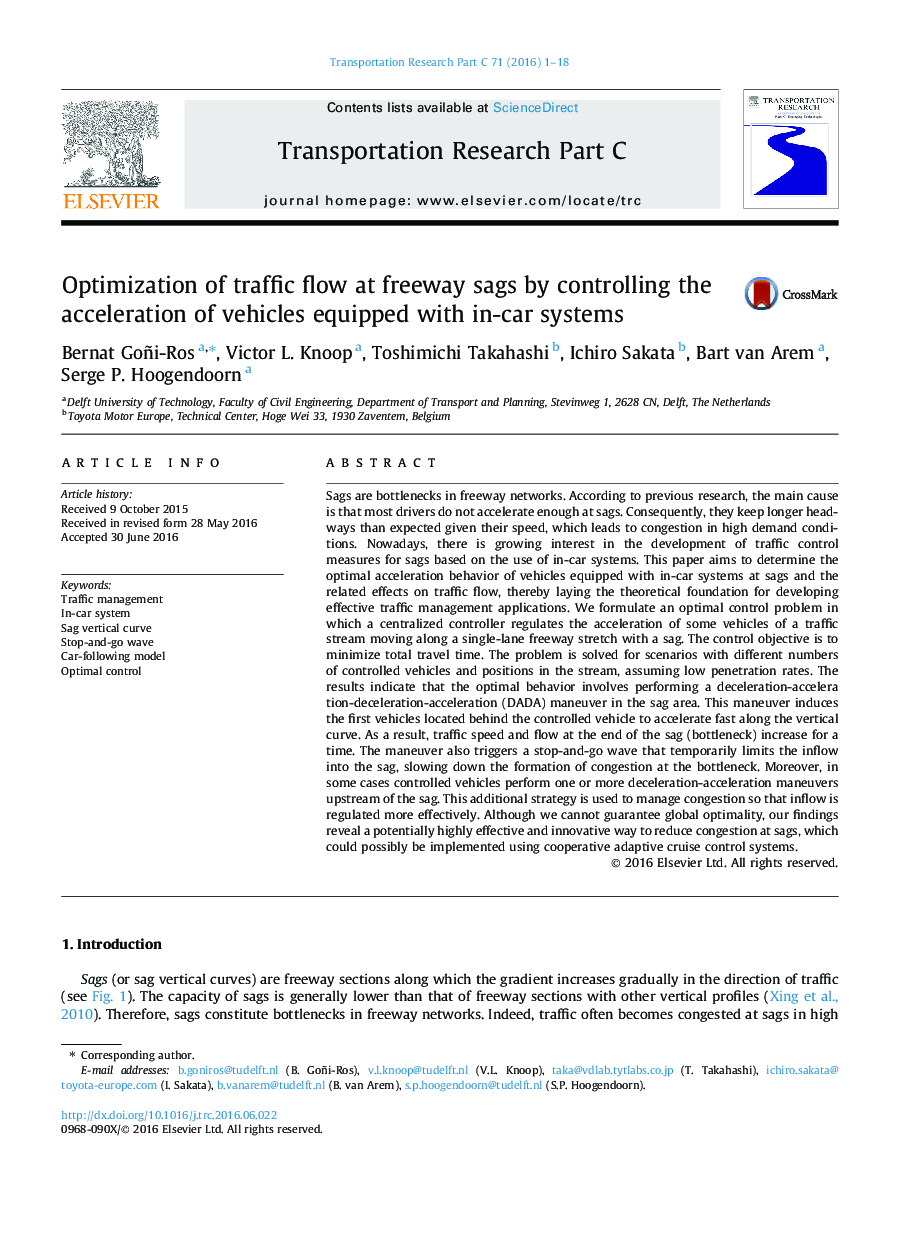| Article ID | Journal | Published Year | Pages | File Type |
|---|---|---|---|---|
| 526220 | Transportation Research Part C: Emerging Technologies | 2016 | 18 Pages |
•Optimal control is used to identify the best strategies to manage traffic at sags.•Total delay is minimized by controlling the acceleration of some vehicles.•Controlled vehicles perform a deceleration-acceleration maneuver at the sag.•The first group of following vehicles accelerate fast, increasing the sag outflow.•The maneuver also triggers a stop-and-go wave that limits the inflow into the sag.
Sags are bottlenecks in freeway networks. According to previous research, the main cause is that most drivers do not accelerate enough at sags. Consequently, they keep longer headways than expected given their speed, which leads to congestion in high demand conditions. Nowadays, there is growing interest in the development of traffic control measures for sags based on the use of in-car systems. This paper aims to determine the optimal acceleration behavior of vehicles equipped with in-car systems at sags and the related effects on traffic flow, thereby laying the theoretical foundation for developing effective traffic management applications. We formulate an optimal control problem in which a centralized controller regulates the acceleration of some vehicles of a traffic stream moving along a single-lane freeway stretch with a sag. The control objective is to minimize total travel time. The problem is solved for scenarios with different numbers of controlled vehicles and positions in the stream, assuming low penetration rates. The results indicate that the optimal behavior involves performing a deceleration-acceleration-deceleration-acceleration (DADA) maneuver in the sag area. This maneuver induces the first vehicles located behind the controlled vehicle to accelerate fast along the vertical curve. As a result, traffic speed and flow at the end of the sag (bottleneck) increase for a time. The maneuver also triggers a stop-and-go wave that temporarily limits the inflow into the sag, slowing down the formation of congestion at the bottleneck. Moreover, in some cases controlled vehicles perform one or more deceleration-acceleration maneuvers upstream of the sag. This additional strategy is used to manage congestion so that inflow is regulated more effectively. Although we cannot guarantee global optimality, our findings reveal a potentially highly effective and innovative way to reduce congestion at sags, which could possibly be implemented using cooperative adaptive cruise control systems.
